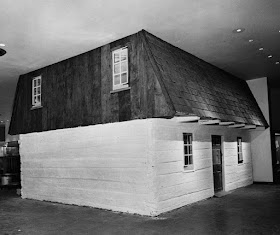 |
| John Mitchell, c.1870 (courtesy - Seely Family) |
John Mitchell (1818-1897) was the fifth of eleven children born to Joseph and Sarah Mitchell, and grew up on his family's farm near North Star, the property now known as the Woodside Farm Creamery (featured in a previous post). Presumably, John spent his first 29 years living on the home farm, working alongside his father and brothers. In 1847, John married Sarah Eastburn, the 12th child of David and Elizabeth Eastburn. That same year, he bought a house and farm, the first of at least six he would purchase in his life. In this first home, known as Sugar Loaf Farm and located just north of Hercules Road near Newport Gap Pike, John and family would reside for the next 19 years. The house had previously been owned by Abraham Mendenhall, son of Aaron Mendenhall, and may have been built by him around 1814. After Abraham died in 1833 and several of his children moved west joining the initial westward Mormon migration, his widow Elizabeth Mendenhall continued to live here. Mitchell almost certainly purchased the property from her, and she remained either on the land or in a neighboring house after 1847.*


